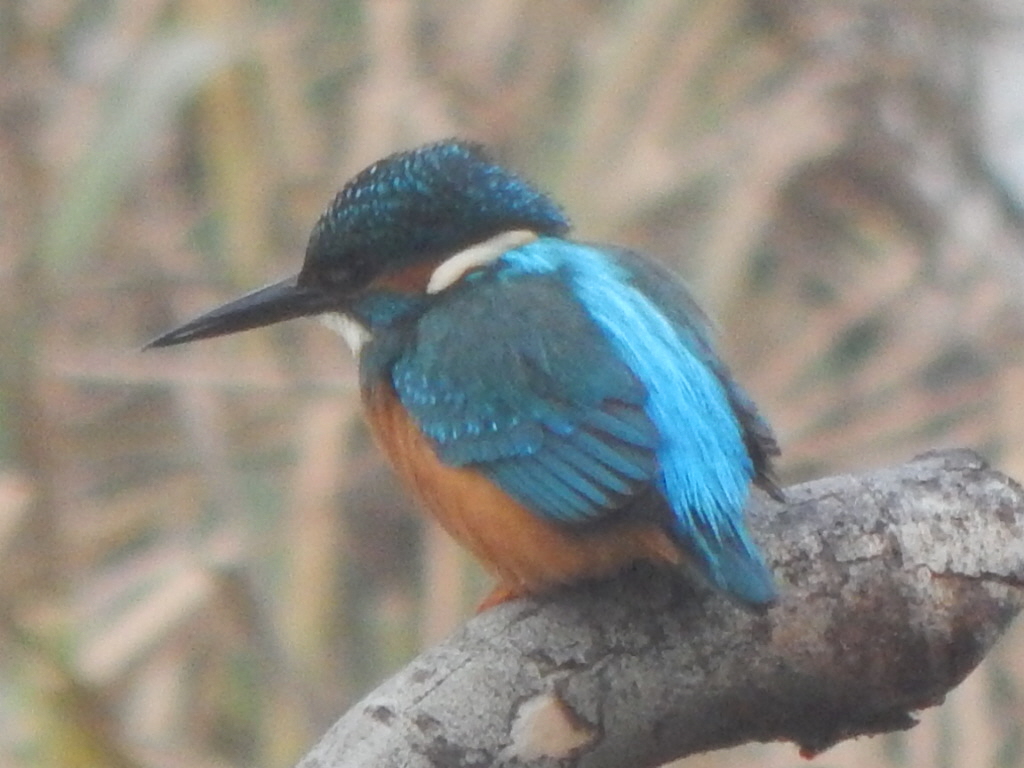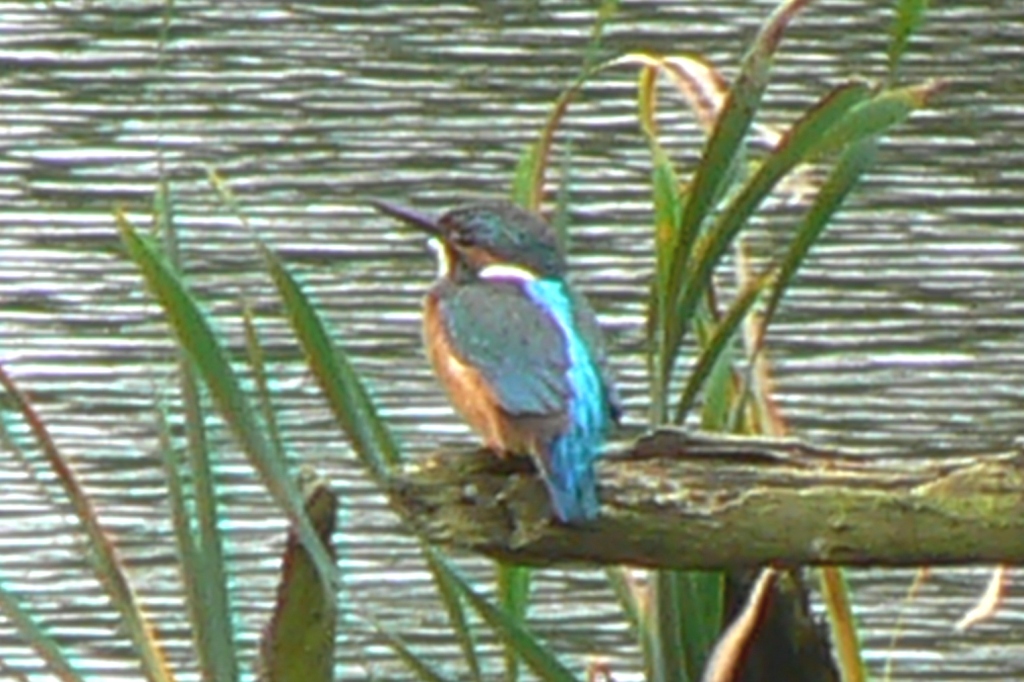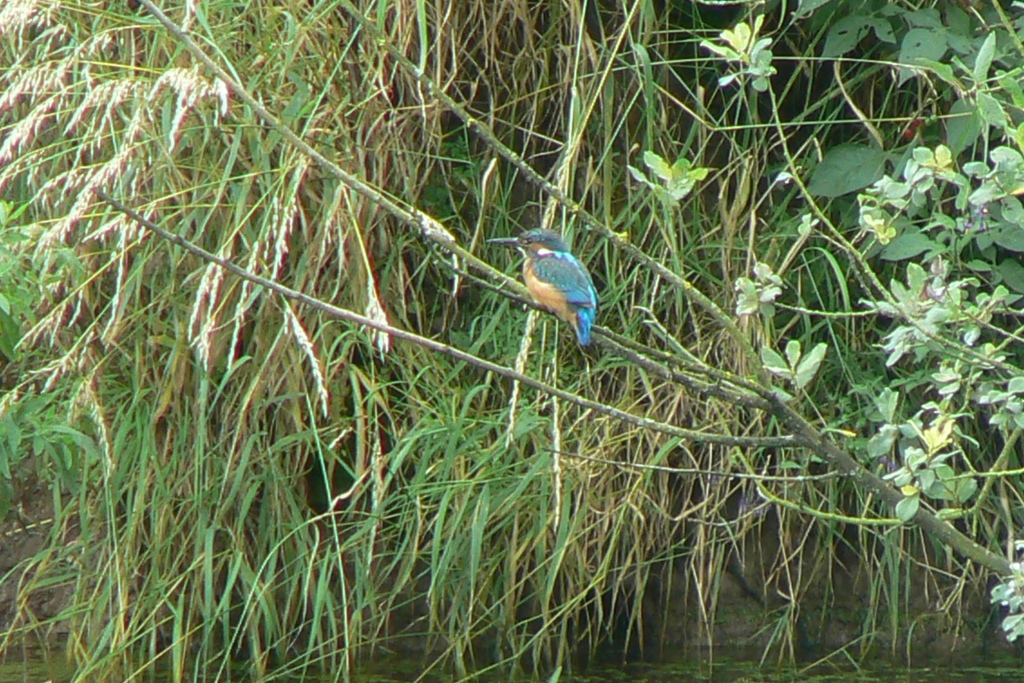
[014] Alcedo atthis, Kingfisher
Introduction
Alcedo atthis, the Kingfisher, is a small attractive colourful bird, generally only ever seen near or flying over water.
As I am sure you will have guessed by now, Kingfisher is not a precise enough name. It’s a Common Kingfisher or European Kingfisher or River Kingfisher. But it’s the only one you will ever see in Britain so we call it just a Kingfisher.
This species is on the margins of acceptability for inclusion in this blog. I only have one half-decent picture but I thought it was too good a species to leave out.
Taxonomy
Kingdom – Animals
Phylum – Chordates
Class – Aves (birds)
Order – Coraciformes (Kingfishers, Rollers and others)
Family – Alcedinidae (Kingfishers)
Genus – Alcedo
Scientific Name – Alcedo atthis
Name
I will let you have a guess at where the word ‘kingfisher’ comes from.
As with a lot of taxonomy, names come from Ancient Greek Mythology. The first pair of mythical birds, Halcyon (Kingfishers) were created from the marriage of Alcyone and Ceyx. They lived in sacrilege by referring to themselves as Zeus and Hera and died for this. But the other gods, in compassion, made them into birds in their original seaside habitat. Also, special ‘Halcyon Days’ were granted, seven days each side of the winter solstice, when storms would not occur for them – to care for winter-hatched young. We still talk of halcyon days referring to an idyllic time in the past.
Many kinds of kingfisher are named after this couple although the derivation is obscure for Alcedo atthis. Alcedo is the Latin for kingfisher, probably from the Greek Halcyon. Atthis is probably the name of a beautiful young woman but the connection is not clear.
Kingfishers
The kingfisher family, Alcedinidae, has over a hundred species, mostly from tropical locations. The birds are medium sized, often brightly coloured and have short tails and long pointed beaks.
They catch prey by swooping down from a perch of flying overhead. They have excellent colour vision and can compensate for reflected glare on water. They can also see as they dive underwater and can estimate the depth under water of their targets. Not all species of Kingfisher actually eat fish.
Description
Alcedo atthis is a relatively small species of kingfisher, slightly larger than a sparrow. It has bright orange underparts and a fluorescent blue-turquoise back and head. It is unmistakable in flight. The shining turquoise colour is produced by iridescence created by the fine structure of their feathers,
When flying they are fast and direct, almost always over water – round the edge of a lake or following a river.
Habitat
They like to perch over water and hunt by flying directly down to their prey but they can also hunt by flying along a river. Bird photographers often entice them by placing a suitable large stick at the water’s edge next to a hide. They are said to be curious and always ready to try out a new perch.
They are vulnerable to harsh winters and may migrate to coastal locations.
Breeding
They nest in a hole made in the side of riverbanks and may go back to the same nesting site every year.




Other Notes
I have seen these birds at several locations but it’s usually just a glimpse as they fly past. All the places where I have seen them perching relatively close are nature reserves of some sort. Slimbridge has a carefully constructed river bank opposite a hide, where you may be lucky enough to see one when they are breeding. While the female is on the nest inside the bank the male brings food back about every twenty minutes. He generally poses outside for a few minutes after delivering it before flying off again.
Birds find it easy to swallow fish head first. When feeding young they manipulate it the other way round to give it to the chick the right way.
See also
There is no other bird remotely similar to the Kingfisher that you will see in Britain.
